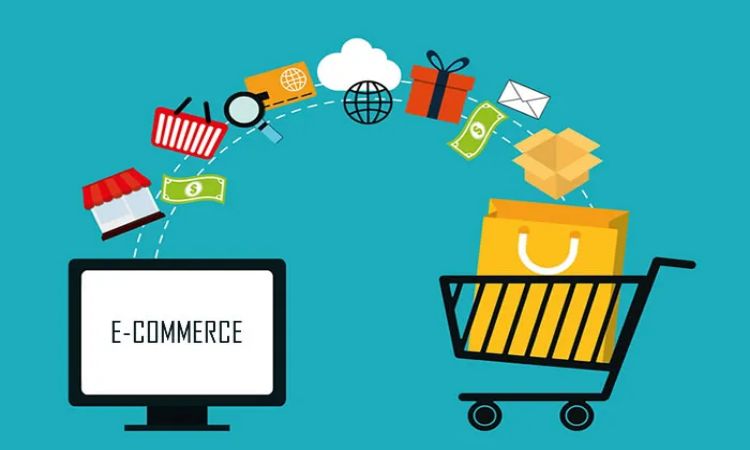
Online store sites serving B2B customers face unique payment challenges. These can range from managing large transaction volumes to integrating multiple payment options. Addressing these issues is essential to ensure a smooth purchasing experience and to build long-term business relationships. This article identifies common problems with B2B payments and explains how modern ecommerce solutions can help resolve them.
1. Limited Payment Methods
B2B buyers often expect more than just credit card options. They may require invoicing, purchase orders, or other flexible payment solutions that align with their procurement processes. A lack of variety can lead to abandoned transactions or delays.
Solution:
Modern ecommerce platforms integrate multiple payment methods to accommodate diverse needs. Options like ACH transfers, buy-now-pay-later services, and digital wallets offer buyers flexibility. Ensure the platform supports customized payment terms to match client requirements.
2. Payment Processing Delays
Delays in processing payments can slow down order fulfillment, frustrate buyers, and disrupt cash flow. This is particularly problematic in B2B transactions, where payments often involve higher amounts and additional verification steps.
Solution:
Use payment gateways optimized for high-value transactions. These systems process payments efficiently, reducing wait times. Automating invoice generation and payment reminders can further speed up transactions and minimize manual intervention.
3. Complex Pricing Structures
B2B pricing is often more intricate than standard retail pricing. Discounts, volume-based rates, and negotiated contracts create challenges for standard ecommerce systems. Errors in applying these pricing rules can lead to disputes or lost revenue.
Solution:
Ecommerce solutions with advanced pricing engines can handle complex pricing models. They allow businesses to assign specific pricing rules to customer groups or individual accounts. Automating these processes reduces errors and simplifies the checkout experience.
4. Currency and Tax Issues
B2B businesses that operate internationally face additional challenges, such as currency conversions and tax compliance. Inaccurate calculations can result in losses or strained customer relationships.
Solution:
Adopt ecommerce platforms with built-in support for multi-currency transactions and tax calculations. These tools automatically apply the correct exchange rates and tax rates based on the buyer’s location. Partnering with reliable payment providers also ensures compliance with local regulations.
5. Fraud and Security Risks
High-value transactions make B2B businesses attractive targets for fraud. Issues like unauthorized access, fake orders, and phishing scams are common. Without robust security measures, businesses risk financial loss and damaged trust.
Solution:
Modern ecommerce solutions incorporate advanced security features, such as two-factor authentication and tokenization. Fraud detection tools can identify suspicious activity in real time, minimizing risks. Regularly updating software and training staff on cybersecurity best practices can further enhance protection.
6. Integration Challenges
B2B payments often need to align with other systems, such as accounting, inventory management, and customer relationship management (CRM) tools. A lack of integration can create inefficiencies and errors.
Solution:
Choose ecommerce platforms that offer seamless integration with third-party software. APIs (application programming interfaces) enable data to flow smoothly between systems, ensuring accurate record-keeping and streamlined operations. This reduces manual work and improves overall efficiency.
7. Inadequate Payment Tracking
Tracking payments manually can be time-consuming and prone to errors. Without clear records, disputes can arise, and businesses may struggle to reconcile accounts.
Solution:
Ecommerce platforms with automated payment tracking provide real-time updates. Dashboards display transaction statuses, enabling businesses to quickly identify pending or failed payments. This transparency helps resolve disputes faster and keeps financial records accurate.
8. High Transaction Fees
Processing fees can add up, especially for businesses handling large transaction volumes. Over time, these fees cut into profits, making it harder to maintain competitive pricing.
Solution:
Negotiate fee structures with payment providers based on transaction volume. Some ecommerce platforms also support fee-free payment methods, like direct bank transfers. Carefully evaluate providers to select options that align with your budget.
9. Mobile Payment Limitations
Mobile access is increasingly important, even in B2B transactions. Many buyers use smartphones to approve payments or review orders on the go. If a platform doesn’t support mobile payment functionality, it may lose sales opportunities.
Solution:
Ensure the ecommerce platform is mobile-friendly and supports mobile payment options. Features like mobile wallets and QR code payments make transactions more convenient. Test the platform across devices to confirm compatibility and usability.
10. Recurring Payment Errors
For businesses with subscription models or recurring billing, payment errors can lead to service disruptions. Expired cards or declined payments can delay revenue and frustrate customers.
Solution:
Automate recurring billing with software that sends reminders before payment due dates. Offer multiple payment methods to reduce the risk of declines. Some platforms also provide automatic card updater services to keep payment details current.
11. Lack of Customization
B2B buyers often require customized invoices or payment terms based on their agreements with the seller. Standardized payment systems may lack the flexibility to meet these needs.
Solution:
Use ecommerce platforms that allow customization of invoices, payment schedules, and credit limits. This ensures that buyers receive payment options tailored to their specific agreements, improving satisfaction and trust.
12. Poor Buyer Experience
A complex or confusing checkout process can discourage buyers from completing transactions. This is especially true in B2B ecommerce, where buyers expect a smooth and professional experience.
Solution:
Streamline the payment process with a simple and intuitive interface. Minimize the steps required to complete a transaction and ensure clear instructions are provided at every stage. Regularly gather feedback from buyers to identify pain points and make improvements.
13. Delayed Refunds
B2B transactions may occasionally involve refunds due to order errors or returned items. Delays in processing refunds can harm buyer relationships and reduce repeat business.
Solution:
Automate refund processes to reduce wait times. Ecommerce platforms with built-in refund management tools can track requests and issue payments quickly. Clear communication with buyers about refund timelines also helps manage expectations.
14. Scalability Issues
As businesses grow, their payment systems must scale to handle increased transaction volumes and new customer requirements. Legacy systems often struggle to keep up, leading to bottlenecks.
Solution:
Invest in cloud-based ecommerce platforms that scale easily as your business expands. These solutions offer additional resources and features to accommodate growth without significant downtime or disruption.
15. Regulatory Compliance
B2B transactions often involve industry-specific regulations or international trade laws. Non-compliance can lead to fines or legal disputes.
Solution:
Work with ecommerce providers that stay updated on regulatory requirements. Many platforms include compliance tools that ensure adherence to local laws and industry standards. Consulting with legal and financial experts can also help mitigate risks.
Conclusion
Modern B2B ecommerce solutions address payment challenges by offering flexibility, automation, and security. Businesses that adopt these tools can improve buyer satisfaction, reduce errors, and streamline operations. Whether you’re managing large transactions, integrating with other systems, or scaling for growth, the right ecommerce platform can make payments seamless and efficient. Evaluate your current setup and choose solutions that align with your business needs for long-term success.
Write and Win: Participate in Creative writing Contest & International Essay Contest and win fabulous prizes.


